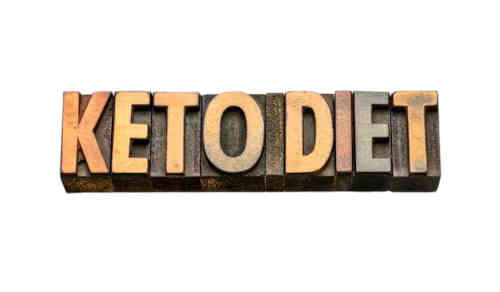Ketosis: Definition, How It Works, Benefits & Side Effects
- Team GOBL
- Ketonemia, Ketosis Diet, What is Ketosis
- 1 Comment
Ketosis (also known as ketonemia) is a natural metabolic state that occurs when the body shifts from relying on carbohydrates for energy to using fat as its primary fuel source. This process is typically achieved by following a low-carbohydrate, high-fat ketogenic diet. Understanding how ketonemia works and its potential benefits can provide insight into this metabolic state and its impact on overall health and well-being. In this comprehensive guide, we will explore the mechanisms of ketosis, the transition into this state, Symptoms, its potential benefits, and the side effects.
What is Ketosis
Ketosis is a natural metabolic state in which the body turns to burning fats for energy when the supply of carbohydrates is limited. This process produces ketones, which are used as an alternative fuel source for the brain and muscles. ketonemia is commonly achieved through a low-carbohydrate, high-fat diet, such as the ketogenic diet.
Mechanisms
- The process begins with a reduction in carbohydrate intake. With fewer carbohydrates available, the body depletes its glycogen stores, which are reservoirs of glucose stored in the liver and muscles.
- As carbohydrate intake decreases, insulin levels drop. Insulin is responsible for facilitating the uptake of glucose by cells. Lower insulin levels signal the body to transition to an alternative energy source.
- With glycogen stores depleted, the body initiates lipolysis, a process where stored fat is broken down into fatty acids and glycerol. These fatty acids become the raw materials for the production of ketone bodies.
- Fatty acids are transported to the liver, a central player in ketogenesis. The liver converts fatty acids into ketone bodies, namely acetoacetate, beta-hydroxybutyrate, and acetone. These ketone bodies are released into the bloodstream.
- Ketone bodies are an alternative energy source for various tissues, including the brain. Unlike fatty acids, ketones can cross the blood-brain barrier, providing a crucial energy supply for the brain during periods of low glucose availability.
- Achieving ketonemia is a gradual process that involves adapting the body’s metabolic pathways. This adaptation period can take several days, during which the body becomes more efficient at utilizing ketones for energy.

Photo/istockphoto
Transition Into Ketosis
Transitioning into ketonemia involves shifting the body’s energy source from carbohydrates to fats. This process typically occurs within 2-4 days of drastically reducing carbohydrate intake, causing the body to deplete its glycogen stores. As a result, the liver begins to produce ketone bodies, which are used as an alternative fuel source for the brain and body. During this transition, individuals may experience symptoms known as the “keto flu,” including fatigue, headaches, and irritability, as the body adjusts to using ketones for energy. Over time, the body becomes more efficient at using fats for fuel, leading to potential benefits such as increased energy levels and improved weight management.
Symptoms
- Increased Thirst and Dry Mouth
One of the early signs of Ketonemia is increased thirst. As the body begins to use stored glycogen, it releases water, leading to dehydration and a dry mouth. It’s crucial to stay well-hydrated during this process.
- Frequent Urination
As the body sheds excess water along with glycogen, individuals in ketonemia may notice an increase in urine production. This is part of the initial water weight loss associated with the shift to a ketogenic state.
- Fatigue and Weakness
During the transition to ketonemia, some individuals may experience fatigue and weakness. This is often temporary and can be attributed to the body adapting to a new energy source. Once the adaptation is complete, many people report increased energy levels.
- Headache
Some individuals may experience headaches during the initial stages of ketonemia. This could be related to dehydration, electrolyte imbalances, or the body’s adjustment to using ketones for energy.
- Digestive Issues
Changes in dietary patterns, especially when increasing fat intake, can lead to digestive issues such as constipation or diarrhea. These symptoms are usually temporary and may resolve as the body adjusts.
- Bad Breath
A common side effect of ketonemia is acetone breath, often described as a fruity or metallic odor. This is a result of the body excreting ketones through breath and urine. Good oral hygiene practices can help manage this symptom.
- Appetite Suppression
ketonemia is known to have an appetite-suppressing effect, which can be beneficial for those aiming to lose weight. However, some individuals may need help to consume enough calories, leading to potential nutritional deficiencies.
- Insomnia
Some people may experience difficulty sleeping when they first enter ketonemia. This could be due to changes in energy levels, hormonal shifts, or other factors. However, sleep patterns often stabilize as the body adapts.
Ketosis vs Ketoacidosis
Ketosis (also known as ketonemia) and ketoacidosis are two distinct physiological states that involve the production and utilization of ketone bodies in the human body; however, they differ significantly in their health implications. Ketosis is a natural metabolic state in which the body uses fat stores for energy when glucose levels are low, such as during fasting or strict carbohydrate restriction. This process leads to the production of ketone bodies, which can provide an alternative energy source for the brain and muscles. In contrast, ketoacidosis is a dangerous and potentially life-threatening condition that occurs in individuals with uncontrolled diabetes, particularly type 1 diabetes. In ketoacidosis, the body produces high levels of ketone bodies, causing blood acidity to rise to dangerous levels. This can result in symptoms such as nausea, vomiting, extreme thirst, and in severe cases, coma or death if left untreated. Therefore, while ketonemia can be a natural and benign metabolic state, ketoacidosis requires urgent medical attention to ensure proper management and treatment.

Photo/istockphoto
Potential Benefits of Ketosis
- Weight loss
Ketonemia can promote weight loss by increasing the body’s ability to burn fat for energy. This may be particularly beneficial for individuals looking to reduce body fat and improve body composition.
- Appetite suppression
Some people report reduced hunger and cravings while in ketonemia, which can make it easier to adhere to a calorie-restricted diet.
- Improved mental clarity and focus
The brain can efficiently use ketones as an energy source, which may lead to improved cognitive function, mental clarity, and focus for some individuals.
- Enhanced physical performance
While it may take time for the body to adapt to using ketones for fuel during exercise, some athletes and fitness enthusiasts report improved endurance and performance after becoming fat-adapted.
- Potential health benefits
Some studies suggest that ketonemia may have therapeutic benefits for a variety of health conditions, including epilepsy, neurodegenerative diseases, type 2 diabetes, and metabolic syndrome. However, more research is needed in these areas.
- Stable blood sugar levels
A ketogenic diet can help stabilize blood sugar levels and improve insulin sensitivity, which may be beneficial for individuals with insulin resistance or prediabetes.
Potential Side Effects of Ketosis
While ketonemia can offer potential benefits, it’s essential to approach the ketogenic diet with careful consideration and planning. Consulting with a healthcare professional, particularly for individuals with underlying health conditions, is crucial before embarking on a ketogenic diet. Adhering to a well-formulated ketogenic diet ensures adequate intake of essential nutrients while limiting carbohydrates. This may involve incorporating healthy fats, such as avocados, nuts, and olive oil, and consuming moderate amounts of high-quality proteins. Monitoring ketone levels, maintaining proper hydration, and addressing potential electrolyte imbalances are important considerations for long-term adherence to a ketogenic diet.
In summary, ketonemia is a metabolic state that offers potential benefits for overall health and well-being. Understanding the mechanisms of ketonemia, the transition into this state, its potential benefits, and considerations for implementing a ketogenic diet provide valuable insights into this dietary approach. While ketonemia may offer various advantages, it’s important to approach the ketogenic diet with careful planning and, when necessary, professional guidance. By gaining a comprehensive understanding of how ketonemia works and its potential benefits, individuals can make informed decisions about incorporating this dietary approach into their lifestyle.
FAQ's
How long does it typically take for the body to enter ketonemia after starting a ketogenic diet?
The time it takes for the body to enter ketonemia after initiating a ketogenic diet can vary from person to person. Generally, it takes anywhere from two to seven days for an individual to reach a state of ketonemia. This transition period depends on various factors, including the individual’s metabolism, activity level, and carbohydrate intake before starting the diet. When one significantly reduces their carbohydrate intake, the body begins to deplete its glycogen stores. As glycogen levels drop, the liver starts producing ketones from stored fat to provide an alternative fuel source for the body and brain. Achieving ketonemia may be accompanied by symptoms commonly referred to as the “keto flu,” which can include fatigue, headaches, and irritability. Staying well-hydrated and ensuring adequate electrolyte intake can help alleviate these symptoms during the initial adaptation phase.
How does exercise affect ketonemia, and can physical activity impact the duration or intensity of ketonemia?
Exercise can have both positive and nuanced effects on ketonemia. Engaging in physical activity, especially aerobic exercise, can accelerate the depletion of glycogen stores, aiding the body in reaching ketonemia more quickly. Additionally, exercise enhances insulin sensitivity, helping to regulate blood sugar levels and promote the utilization of ketones for energy. However, intense or prolonged exercise might increase the body’s demand for glucose, potentially leading to a temporary rise in blood sugar levels. This could transiently interrupt ketonemia, but the body often returns to ketonemia once the glucose demand subsides. Regular physical activity, when combined with a ketogenic diet, can contribute to overall metabolic health and weight management. It’s essential to note that individual responses to exercise and ketonemia can vary, and some people may find that moderate, well-timed workouts complement their ketogenic lifestyle without significant disruption to ketonemia. Monitoring one’s own body and adjusting dietary and exercise strategies accordingly can help optimize the balance between physical activity and ketonemia.
What role does insulin play in the context of ketonemia and how does it affect the body's ability to burn fat for fuel?
Insulin plays a pivotal role in the context of ketonemia as it is a hormone that regulates blood sugar levels and nutrient storage in the body. When insulin levels are high, typically in response to elevated blood glucose levels after consuming carbohydrates, the body prioritizes glucose as its primary fuel source. In this state, fat burning is suppressed, and excess glucose is stored in the form of glycogen in the liver and muscles. On the contrary, when insulin levels decrease, such as during carbohydrate restriction, the body is prompted to switch to an alternative energy source. With reduced insulin signaling, the liver begins to convert stored fat into ketones, which are then utilized by tissues, including the brain and muscles, as an efficient fuel source. Therefore, lower insulin levels promote the body’s ability to burn fat for fuel, facilitating the onset and maintenance of ketonemia in individuals following a ketogenic diet.
What role does fasting play in achieving and maintaining ketosis?
Fasting plays a significant role in achieving and maintaining ketonemia by reducing insulin levels and depleting glycogen stores, pushing the body to rely on fat for energy. During a fast, especially after an overnight period without food, insulin levels drop, prompting the body to tap into stored glycogen for fuel. As glycogen reserves are depleted, the liver begins converting fat into ketones, initiating the state of ketonemia. Extended periods of fasting, such as intermittent fasting or more prolonged fasting protocols, can further enhance ketone production. The absence of regular meals prevents a continuous influx of glucose, allowing the body to sustain ketonemia for a more extended period. However, it’s crucial to approach fasting cautiously, considering individual health conditions and nutritional needs. When done responsibly, fasting can be a valuable strategy to support the ketogenic lifestyle and promote metabolic flexibility.
Related Posts

Different Types of Ketogenic Diets: What You Need to Know
The ketogenic diet has gained widespread popularity for its potential to promote weight lo ..

The Ketogenic Diet: A Guide to Eating for Optimal Health
Understanding the Ketogenic Diet The fundamental principle of the Ketogenic diet revolv ..




The Ketogenic Diet: A Guide to Eating for Optimal Health - Goods of Better Life
[…] Ketosis is a metabolic state in which the body shifts from primarily utilizing glucose for energy to relying on ketone bodies, which are produced from the breakdown of fats. This physiological process is triggered when carbohydrate intake is restricted, such as during a low-carbohydrate diet or fasting. In the absence of sufficient glucose from carbohydrates, the body turns to its alternative energy source—fat. Initially, the liver breaks down stored glycogen into glucose to maintain blood sugar levels, but as glycogen reserves deplete, the body begins to metabolize fatty acids into ketone bodies through a process known as ketogenesis. These ketones, including beta-hydroxybutyrate, acetoacetate, and acetone, become the primary fuel for the brain and other tissues. The transition to ketosis typically takes a few days, during which individuals may experience symptoms known as the “keto flu,” including fatigue, headaches, and irritability. Ketosis offers various benefits, such as enhanced fat burning, increased satiety, and improved mental clarity. Moreover, it is a cornerstone of ketogenic diets, which have gained popularity for weight loss and potential therapeutic applications in managing conditions like epilepsy and type 2 diabetes. However, it’s crucial to approach ketosis with a balanced and well-informed perspective, considering individual health needs and consulting with healthcare professionals when necessary. […]